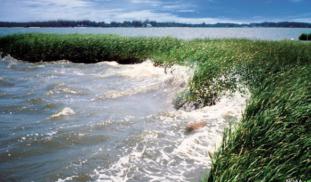Please wait...
About This Project
Due to sea-level rise, prolonged intrusion of seawater into freshwater ecosystems which can alter the soil carbon balance and soil structure of organic rich peat soils. Often this results in the collapse of peat converting wetlands to open water ecosystems. In this study, we will collect porewater and surface water samples from Everglades National Park and analyze these samples for physical and nutrient parameters to determine benthic metabolic shifts as a result of seawater intrusion.

Browse Other Projects on Experiment
Related Projects
Worms at Work: Scoping Natural Carbon Sequestration at Scale
For centuries, scientists noted earthworms' exploits as ecosystem engineers. Recent research shows the feasibility...
Whales as oceanographers: Developing multi-sensor tags for improved understanding and management of critical habitats
Limited oceanographic data prevent accurate prediction of whale foraging hotspots. To address this, we will...
Communities perception and monitoring of ocean acidification in the Douala-Edea national park (Cameroon)
This project will help us to evaluate the vulnerability of clam fishing to ocean acidification (OA) in the...


